OpenSees Cloud
OpenSees AMI
The Good, the Not So Bad, and the Full General
Original Post - 14 Nov 2024 - Michael H. Scott
Show your support at Buy Me a Coffee.
Just like shopping for a new refrigerator, picking a linear equation solver in OpenSees (via the system command) can lead to paralysis of choice. And while you can consult Consumer Reports for the pros and cons of refrigerators A, B, and C, the only way to figure out the pros and cons of OpenSees solvers is to run your own test cases.
The solid bar model shown in this post is as good a test case as any other. Using successively refined mesh sizes of c=t/1.5, t/2, t/2.5, and t/3, with 585, 1200, 2304, 3894 equations, respectively, should give a good idea how well the various linear equation solvers perform. The model sizes are not very large because I want my crappy laptop to complete the analyses in reasonable time.
A static analysis of the bar model is performed for an increasing load (not important) over 10 pseudo time steps. I used more than one time step to cut down on variance in short run times. All things being equal, differences in run-time can be attributed to the equation solver.
The compute times reported in the plots below are wall times for all parts of the OpenSees analysis, not just the CPU time for only the solver.
It’s fairly well known that equation numbering can have a significant
effect on linear equation solvers. But because the FullGeneral solver is
so slow, all other solvers appear to perform equally well when using the
RCM equation numberer.
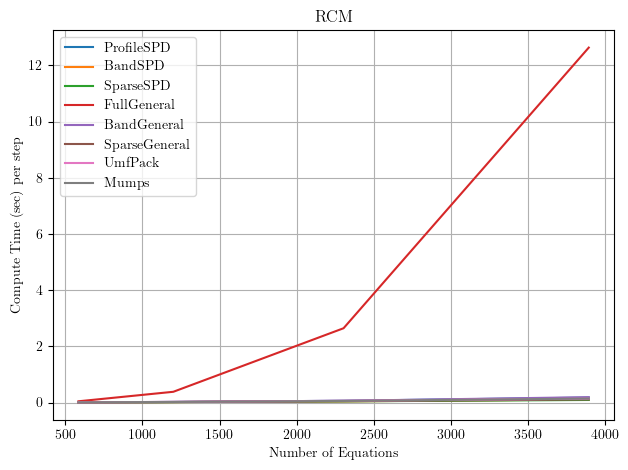
For reference, the stiffness matrix topology for the c=t/2 mesh size is
shown in
this post
for the Plain, AMD, and RCM equation numberers
available in OpenSees. Fortunately, RCM is the default option for the
numberer command.
Changing the numberer to AMD, which leads to a large matrix bandwidth,
the solvers start to sort themselves out.
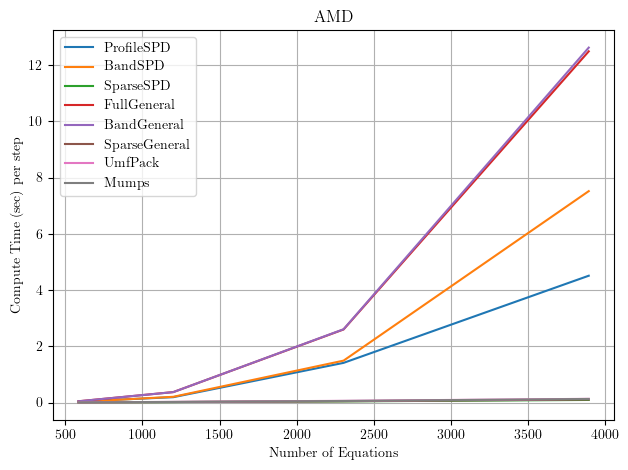
Same deal with the Plain numberer.
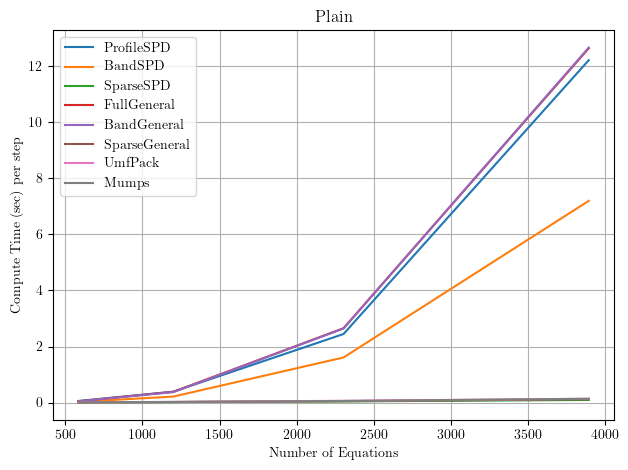
It’s obvious from the foregoing results that the equation numberer affects the run-time significantly for some solvers, but has no effect on other solvers, indicating some solvers override OpenSees and use their own internal equation numbering.
We can get a better idea of what’s happening with equation numbering if we drill down to each solver.
ProfileSPD
The ProfileSPD solver uses profile matrix storage and assumes the matrix
is symmetric and positive definite. This is the default option for the
system command in OpenSees, I believe because Frank wrote the solver
himself.

Assessment: Not so bad
BandSPD
The BandSPD solver is designed for symmetric, positive definite matrices
and assumes banded matrix storage. For this model, the AMD numberer
gives a slightly higher matrix bandwidth than the Plain numberer.
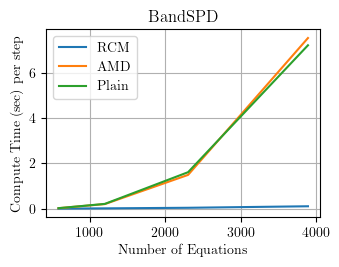
Assessment: Not so bad
SparseSPD
The SparseSPD solver assumes sparse storage of symmetric, positive
definite matrices. As far as I know, this solver is one of the lesser
used solvers in OpenSees. But perhaps the solver should be used a little
more often. Note that this solver is not affected by the equation
numbering provided by OpenSees.
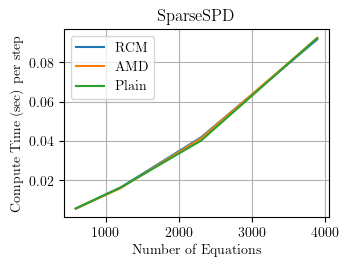
Assessment: Good
FullGeneral
The FullGeneral solver assumes full matrix storage for general
matrices. The equation numberer does not matter.
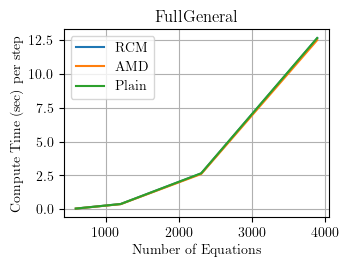
Assessment: The full general
BandGeneral
The BandGeneral solver assumes banded matrix storage for general
matrices. Again, the AMD numberer leads to high bandwidth for this
model.
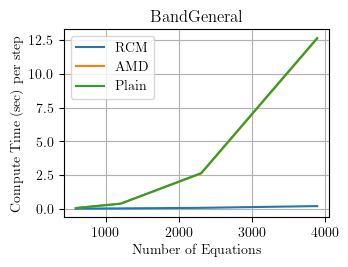
Assessment: Not so bad
SparseGeneral
The SparseGeneral solver assumes sparse storage for general matrices.
I would not expect the equation numberer to matter for sparse storage,
but it does for some reason.
PLOT
UPDATE (November 15, 2024): Based on input from
Gustavo
(see comments below), Frank updated the permSpec variable to be non-zero
(commit 24147d3).
Now the SparseGeneral solver gives the expected results.
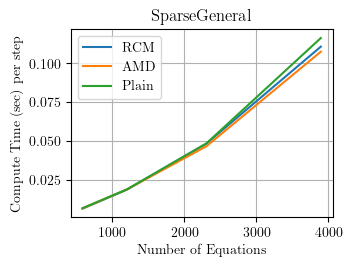
Assessment: Not so bad Good
UmfPack
UmfPack is a sparse matrix solver developed for general matrices. The
solver is impervious to the OpenSees equation numbering.
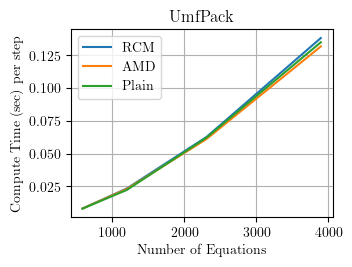
Assessment: Good
Mumps
Mumps is another general, sparse matrix solver, also indifferent to
the equation numbering passed in by OpenSees.
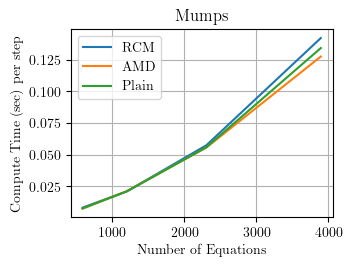
Assessment: Good
That’s a quick run-down of the good, the bad, and the ugly among linear
equation solvers in OpenSees. The SparseSPD and SparseGeneral solvers
appear to be faster than UmfPack and Mumps for this model and analysis,
but just like refrigerators, every solver has its pros and cons.